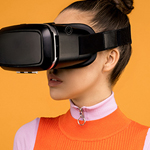AI Powered Camera Systems: From Image Capture to Intelligent Data Use
In an increasingly connected world, cameras are no longer just passive recording devices—they are becoming intelligent sensors capable of understanding and acting on what they see. An AI‑based camera system that can capture images, extract data, and use that data for automated decision‑making is transforming industries from transportation to utilities.
This article explores the requirements, design architecture, and real‑world use cases for such systems.
- System Requirements
Designing an AI‑powered camera system that can read and process data from images requires a combination of hardware, software, and integration capabilities.
Functional Requirements
- Image Capture: High‑resolution camera module capable of capturing clear images in varying lighting and weather conditions.
- Data Extraction: AI/ML algorithms (e.g., OCR, object detection) to identify and read relevant information such as license plates, meter readings, or text labels.
- Real‑Time Processing: Ability to process images locally (edge computing) or via cloud services for quick decision‑making.
- Data Transmission: Secure communication protocols (e.g., HTTPS, MQTT) to send extracted data to backend systems.
- Integration APIs: Interfaces to connect with gate control systems, parking management software, or utility billing platforms.
Non‑Functional Requirements
- Accuracy: High recognition accuracy (>95%) even in challenging conditions.
- Latency: Low processing delay for real‑time applications like automated gates.
- Scalability: Support for multiple cameras and high data throughput.
- Security: Encryption for both data in transit and at rest.
- Reliability: Continuous operation with minimal downtime, including failover mechanisms.
- System Design

Top‑Level Flow:
- Camera Module → Captures image/video feed.
- Image Acquisition & Pre‑Processing → Enhances quality, normalizes lighting, removes noise.
- AI Recognition Engine →
- Object Detection (e.g., license plate, meter display)
- OCR (extracts text/numbers)
- Decision Logic → Compares extracted data with rules or databases.
- Integration Layer → Sends commands or data to external systems.
- Use Cases → Automated gate control, parking monitoring, remote meter reading.
A robust AI‑based camera system typically follows a modular architecture:
- Hardware Layer
- Camera Sensor: High‑definition, low‑light capable, possibly with infrared for night vision.
- Processing Unit: Embedded AI chip (e.g., NVIDIA Jetson, Google Coral) or industrial PC for edge processing.
- Connectivity: Ethernet, Wi‑Fi, 4G/5G, or LoRaWAN for remote locations.
- Power Supply: Mains power, solar panels, or battery backup for remote deployments.
- Software Layer
- Image Acquisition Module – Captures frames at defined intervals or triggers (motion detection, sensor input).
- Pre‑Processing Module – Enhances image quality, adjusts brightness/contrast, removes noise.
- AI Recognition Engine – Uses:
- Object Detection (e.g., YOLO, SSD) to locate items of interest.
- Optical Character Recognition (OCR) to read text or numbers.
- Decision Logic – Applies business rules (e.g., if license plate is authorized, open gate).
- Data Management – Stores extracted data locally or in the cloud, with timestamps and metadata.
- Integration API – Sends results to external systems for further action.
- Deployment Models
- Edge AI: Processing happens on‑device for low latency.
- Cloud AI: Images sent to cloud for processing—ideal for complex models or large datasets.
- Hybrid: Initial filtering at the edge, advanced analytics in the cloud.
- Use Cases
- Automated Vehicle Recognition & Gate Control
- Scenario: Vehicles approach a secured facility.
- Process: Camera captures license plate → AI reads plate number → System checks against authorized list → Gate opens automatically.
- Benefits: Faster entry, reduced manpower, enhanced security.
- Parking Monitoring System
- Scenario: Public or private parking lots.
- Process: Cameras at entry/exit points record license plates → System logs entry/exit times → Calculates parking fees automatically.
- Benefits: Automated billing, reduced fraud, improved traffic flow.
- Remote Electric Meter Reading
- Scenario: Utility meters in rural or hard‑to‑reach areas.
- Process: Camera captures meter display → OCR extracts reading → Data sent to utility billing system.
- Benefits: Eliminates manual meter reading, reduces operational costs, enables more frequent billing cycles.
- Additional Applications
- Toll Booth Automation – Automatic toll deduction based on license plate recognition.
- Logistics & Fleet Management – Tracking vehicle movements in warehouses or depots.
- Industrial Asset Monitoring – Reading gauges or labels in manufacturing plants.
- Advantages of AI‑Based Camera Systems
- Operational Efficiency – Automates repetitive tasks.
- Cost Savings – Reduces need for manual labor.
- Accuracy & Consistency – Minimizes human error.
- Scalability – Easily expanded to cover more locations or use cases.
Conclusion
AI‑powered camera systems are no longer futuristic—they are here, delivering measurable benefits across industries. From automated gates to remote utility monitoring, the combination of computer vision, OCR, and edge/cloud integration is enabling smarter, faster, and more reliable operations.
Businesses that adopt these systems can expect not only improved efficiency but also a competitive edge in their respective markets.
Our Expertise at Telary Technologies
Telary Technologies – Expertise in AI‑Driven End‑to‑End Product Design
At Telary Technologies, we bring together deep engineering know‑how and cutting‑edge AI/ML capabilities to deliver complete product design solutions — from concept to deployment. Our strength lies in blending hardware, software, and intelligence into seamless, market‑ready systems.
- End‑to‑End Product Development
- Concept & Feasibility – Translating ideas into viable architectures and product roadmaps.
- Hardware Engineering – Designing high‑performance camera modules, embedded boards, and IoT devices.
- Firmware & Embedded Software – Optimized code for real‑time image capture, processing, and control.
- System Integration – Connecting AI‑powered devices with cloud platforms, APIs, and enterprise systems.
- Testing & Certification – Ensuring compliance, reliability, and robustness in real‑world conditions.
- AI/ML Specialization
- Computer Vision – Object detection, Optical Character Recognition (OCR), and scene understanding for applications like license plate recognition, parking automation, and remote meter reading.
- Edge AI – Deploying models directly on devices for low‑latency, offline‑capable decision‑making.
- Predictive Analytics – Leveraging machine learning to forecast usage patterns, detect anomalies, and optimize operations.
- Custom Model Development – Tailoring AI algorithms to specific industry needs and environmental challenges.
- Domain‑Specific Applications
- Smart Mobility – Automated vehicle recognition, tolling, and gate control systems.
- Smart Infrastructure – Parking monitoring, traffic flow optimization, and urban safety solutions.
- Utilities & Energy – Remote electric meter reading, asset monitoring, and predictive maintenance.
- Industrial IoT – AI‑enabled inspection, quality control, and process automation.
- Why Telary
- Integrated Approach – One partner for hardware, AI, and software.
- Scalable Solutions – From pilot projects to nationwide deployments.
- Proven Expertise – Successful delivery across transportation, utilities, and industrial sectors.
- Innovation‑Driven – Continuous R&D to keep solutions ahead of the curve.
If you’re looking to strengthen your software verification process, get in touch with us today.
Feel free to visit us: https://telarytech.com/ or Send Us Email: info@telarytechnologies.com







Social List